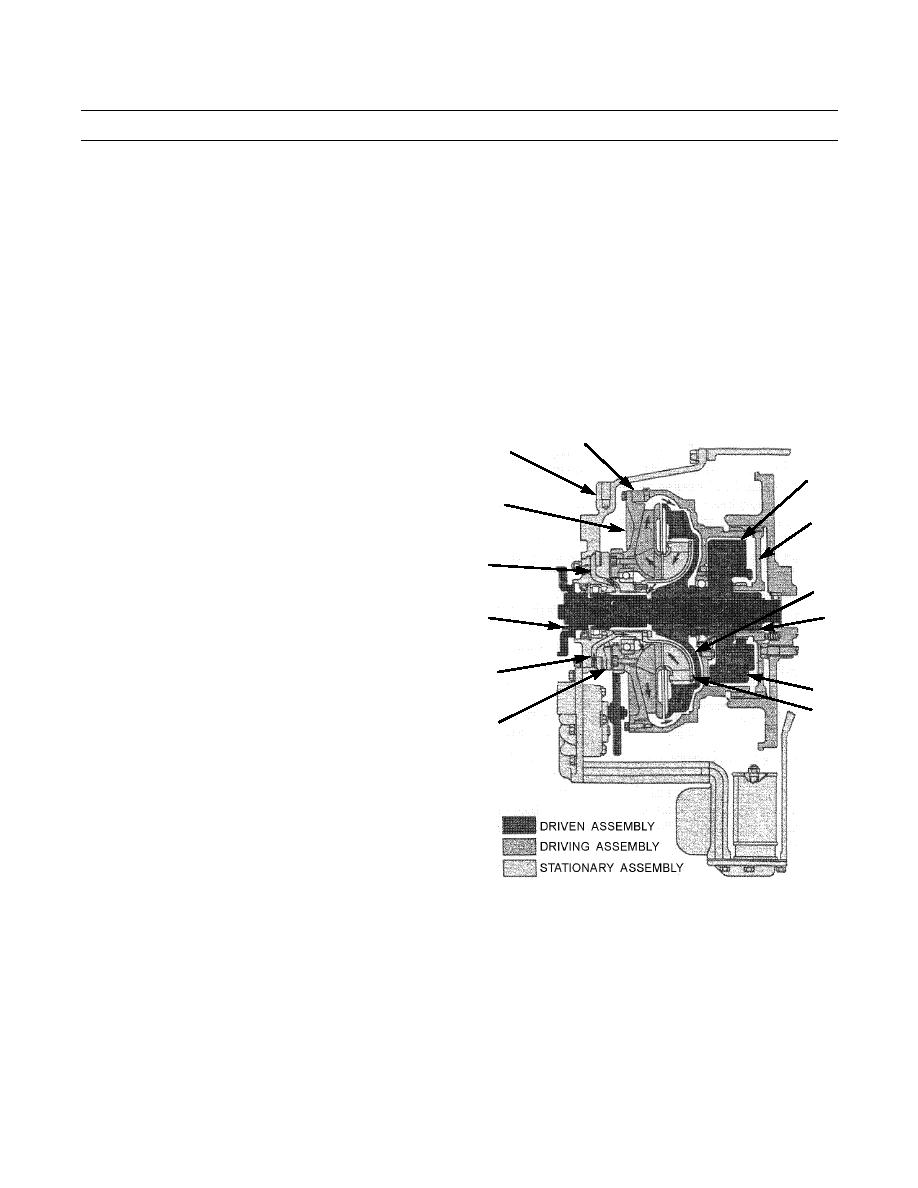 |
|||
|
|
|||
|
|
|||
| ||||||||||
|
|
 TM 5-2410-237-23
TRANSMISSION THEORY OF OPERATION - CONTINUED
0103 00
TORQUE DIVIDER OPERATION - CONTINUED
3.
If the resistance to rotation of planetary carrier (5) becomes higher (more load on the machine), the speed of the ring
gear (3) will decrease more. The slower speed will let the torque multiplication through both the torque converter and
the sun gear (2) become higher. If the resistance to rotation of the planetary carrier becomes high enough, the ring gear
will stop. During some very high load conditions, the rotation of the planetary carrier and the output shaft will also stop.
This will cause the ring gear to turn slowly in the opposite direction. At this time the torque multiplication of the torque
converter and the sun gear is at its maximum.
TORQUE CONVERTER OPERATION
1.
Oil for the operation of the torque converter goes through inlet passage (8) in carrier (9) to impeller (10). The rotation of
the impeller gives force to the oil. The impeller sends the oil toward the outside of the impeller, around the inside of the
housing (11) to turbine (7). The force of oil hitting the blades of the turbine causes the turbine to turn. Since the turbine
is connected to ring gear (3), torque is sent to planetary gears (4). At this point in time, the torque given to the turbine by
the force of the oil from the impeller cannot be more than the torque output of the engine to the impeller.
2.
As the oil goes from the turbine, it is moving in a
11
1
direction opposite to the direction of impeller (10)
rotation. Stator (12) causes the oil to change direction.
3
Since the stator is connected to carrier (9) and cannot
10
turn, most of the oil is sent back to impeller (10). The
2
remainder of the oil goes from the stator through out-
let passage (13) to the oil cooler and the transmission
lubrication system.
13
3.
The force of the oil from the stator (12) can now add
7
the torque output from the engine to impeller (10).
5
6
This extra force can give an increase to the torque out-
put of the engine to the turbine (7). The larger the dif-
ference between the speeds of the impeller and the
turbine, the larger the amount of force of the oil from
8
4
the stator. Since it is the load on the machine that
changes the speed of the turbine, the higher the load,
12
9
the larger the difference in the speeds of the impeller
and the turbine. It is then the different loads on the
machine that control the amount of torque multiplica-
tion that the force of the oil from the stator can add.
387-635
0103 00-2
|
|
Privacy Statement - Press Release - Copyright Information. - Contact Us |